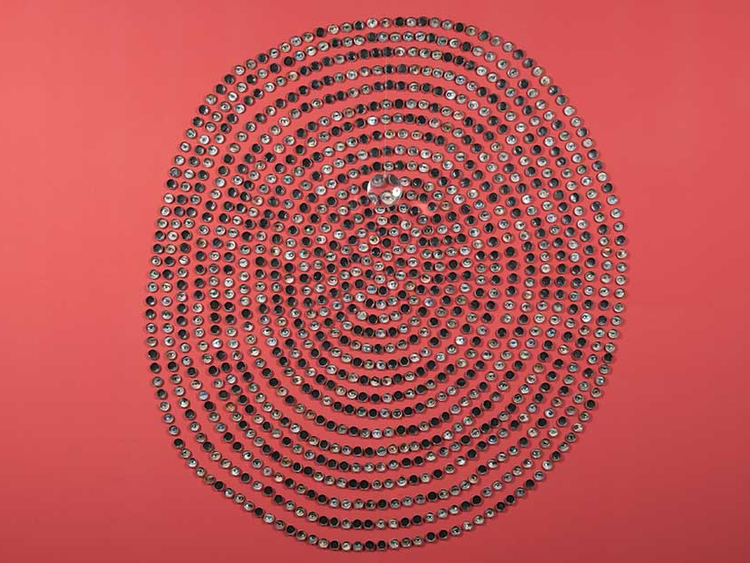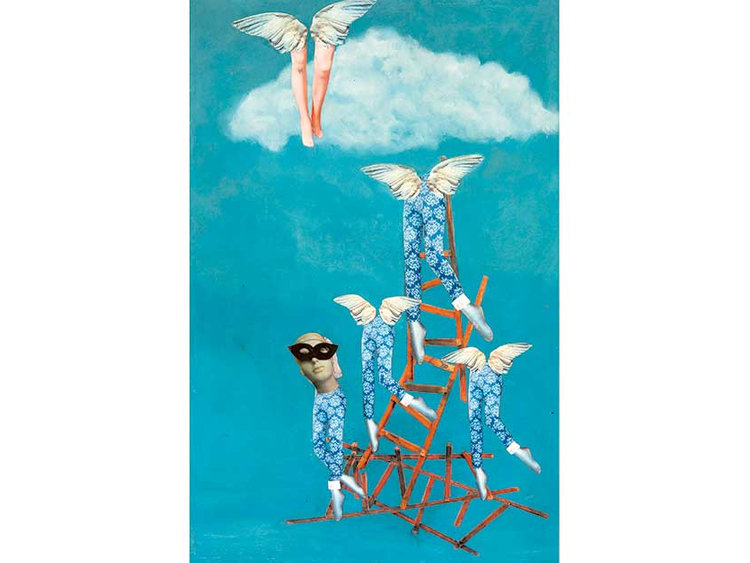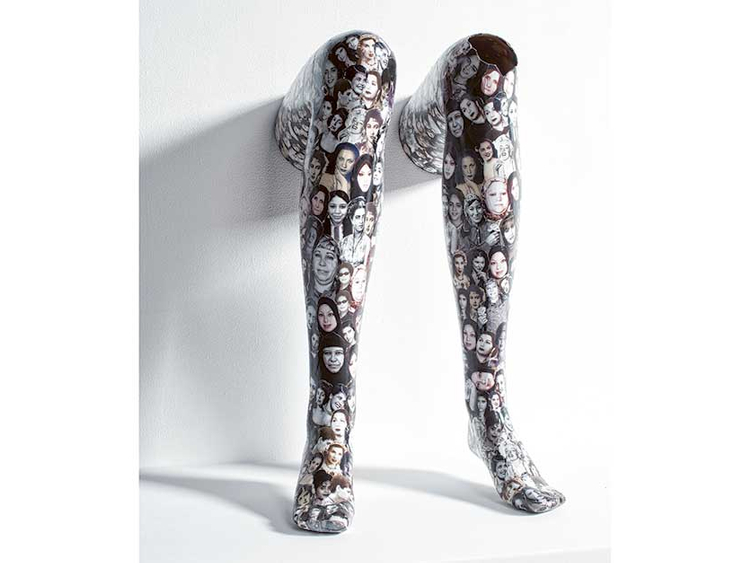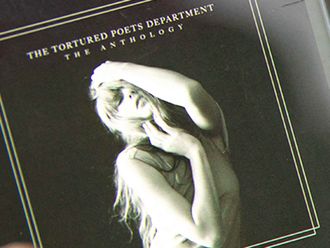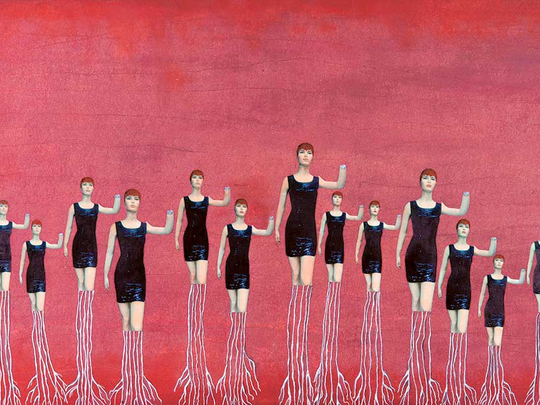
Well-known Egyptian artist Huda Lutfi’s latest show in Dubai, “Magnetic Bodies: Imaging the Urban”, is part of her ongoing exploration of her city, Cairo.
The show features recent photo collages, sculptures, installations and video works that speak about the sociocultural fabric of the city and the chaos of urban life. The show also includes related seminal works that offer insights about the themes she has addressed throughout her career, and the techniques, motifs and materials she uses to explore them.
Lutfi was born in 1947 in Cairo. She is a cultural historian and has no formal training in art. She began her artistic career in the mid-1990s, and has been a leading voice of the independent art scene of Cairo. Her work expresses her feminist perspective on issues such as the repression of women, the idea of nationalism, growing consumerism, the impact of globalisation on local cultures and economies and the effect of rapid urbanisation.
In the past Lutfi has used dolls to explore the objectification of the female body and other gender issues. But the “magnetic bodies” in this show are the plastic mannequins that can be seen in shop windows around Cairo.
Lutfi has documented a variety of male and female mannequins ranging from mannequins handcrafted by an Egyptian artisan and used for displaying headscarves, to provocatively dressed or bare bodied mass produced ones resembling Western celebrities.
She also photographed piles of damaged and discarded mannequins lying in junk yards or on sale in local flea markets. Using techniques of bricolage and photomontage, she has juxtaposed these images with pictures of people and places on the streets of Cairo, and handpainted backgrounds of blue skies to construct surreal landscapes and layered visuals about the chaos and complexity of urban life.
In Lutfi’s mixed media cityscapes topsy-turvy skyscrapers are juxtaposed with traditional houses, historical monuments, shops and restaurants, and they are inhabited by ordinary people, masked superheroes, mannequins and real and mythological animals. Her canvases are filled with intricate details that tell myriad stories and offer a new perspective on familiar sights in the city. In some works the artist has included images of her deceased cat Mahrukh, intertwining her personal stories with that of her city.
Through the repetitive imagery of the decorative, functional, breakable and disposable female mannequins with price tags stuck on them, the artist comments on issues of gender, consumerism, and the prejudices and dualities that have become part of our lives. Female mannequins enclosed within walls, or in boxes; wielding scissors; or walking on tight ropes stretched on precariously stacked ladders and ornate pillars are recurring motifs in these works.
In one painting their legs are transformed into tree trunks rooted to the ground, while in another they are seen as winged headless angels floating in the clouds. Other images include groups of female mannequins tied together with string; dismembered female legs emerging from behind screens; and disjointed limbs moving in opposite directions.
In an installation titled “Plastic”, the images of the mannequins are trapped inside plastic bottles, speaking about the commodification of the body as well as consumerism. The gender story is also told through images of male mannequins such as “The Fool’s Play” where their faces are hidden behind dunce caps, legs replaced with female legs, and torsos covered with Sufi inscriptions.
Lutfi’s engagement with themes of gender, consumerism and urbanisation are also seen in earlier works in the show. These include works from her 2006 “Found in Cairo” and “Arayess” series, where she used China made dolls sourced from Egyptian markets to highlight the gradual disappearance of traditional handmade dolls from the local markets, and the impact of globalisation on the production of local cultural objects and traditions. In other works the figure of the doll appears as a symbol of the objectification and imposed modes of identity construction of the body.
The artist has often used portraits of iconic Egyptian women from the past and present such as Nefertiti and Umm Kulthum as well as of her mother and friends to speak about the repression of women and themes such as state sponsored ideas of nationalism.
The show features several examples of these. “The Perfumed Garden” is a well-known work from 2008 comprising rows of empty perfume bottles arranged on shelves, each containing a handpainted portrait of an iconic Arab female figure trapped inside. Similarly, in “House Bound”, the legs of a mannequin covered with these portraits, are bound to the wall.
While her work is strongly feminist, as a cultural historian Lutfi has also been interested in investigating the impact of socio-cultural conditioning on men. She has used imagery of superheroes, and male bodies from magazines to speak about the pressure of expectations that men have to live up to.
An example is her 2010 installation, “Stripping off the Garments” where perfume bottles in the shape of bare male torsos are arranged in a dark room, inviting viewers to contemplate how we define ourselves and what happens when we shed our preconceptions.
During the protests in Tahrir Square in 2011, the artist was inspired to start documenting her surroundings with her camera and using the pictures in her work.
The strong works she created about this event and its aftermath include “Cactus Crutches”, featuring several crutches and resin sculptures of feet covered with images of cacti; “Discarded” which is a poignant reminder of the fact that many protestors were shot in the eyes; and other works commenting on the subsequent suppression on young people. The symbolism of crutches also appears in other works from that period as well as in recent works.
The show also includes two videos. In “Biyadaat”, the boots of marching soldiers have been transformed into animated legs blurring the lines between mannequins and humans. And “Cairo Resonances” is a moving look at old abandoned buildings in the rapidly changing landscape of Cairo.
The juxtaposition of seminal and contemporary works in the show offers insights into Lutfi’s lifelong explorations of themes that concern her as a cultural historian and an educated, thinking woman, and her deep relationship with Cairo.
Jyoti Kalsi is an arts-enthusiast based in Dubai.
“Magnetic Bodies: Imaging the Urban” will run at The Third Line in Alserkal Avenue, Al Quoz, until June 4.



